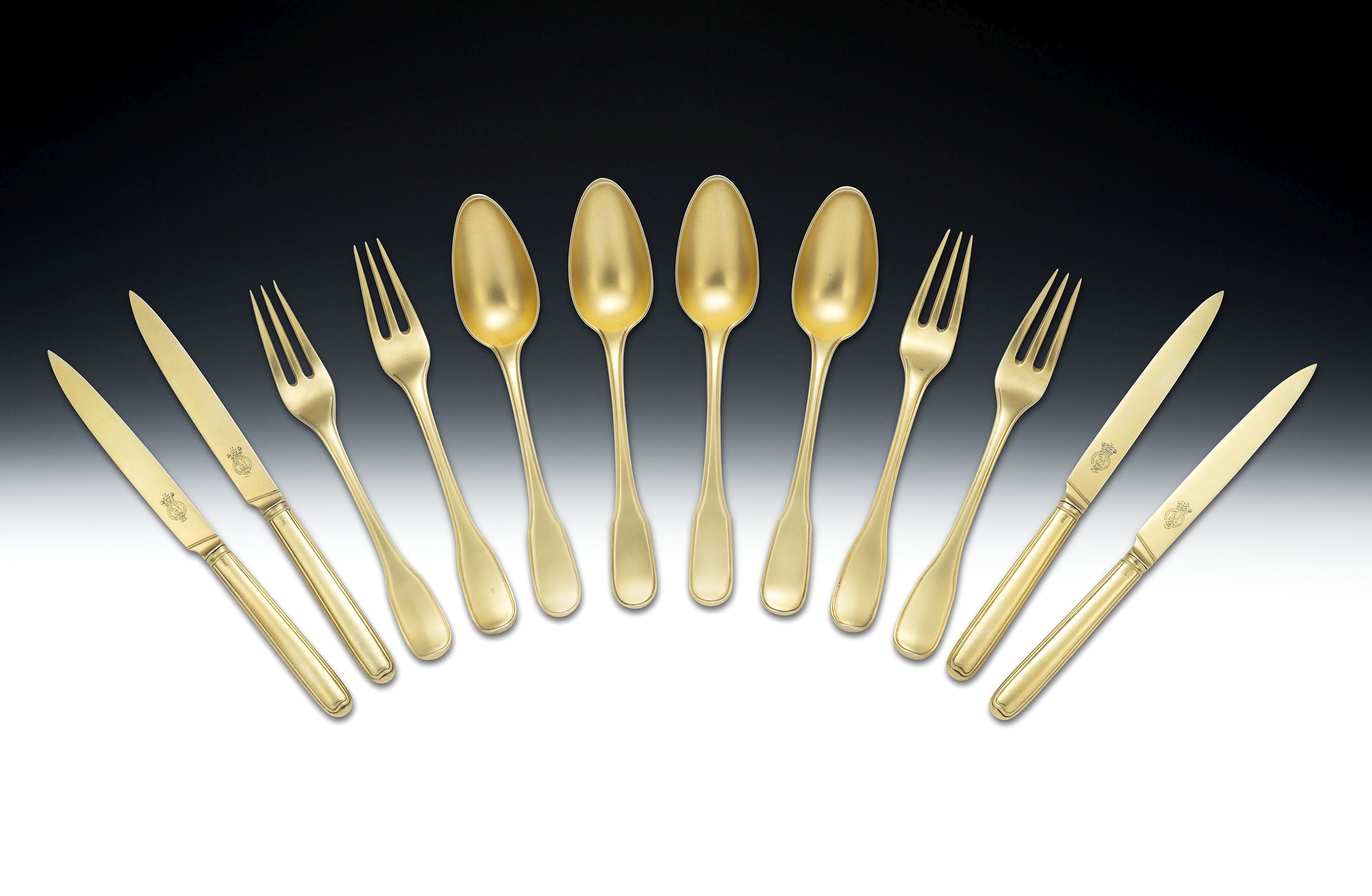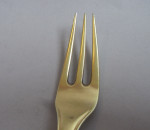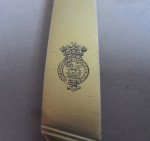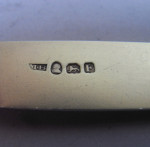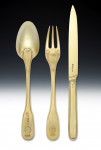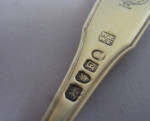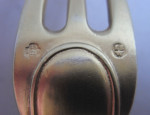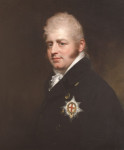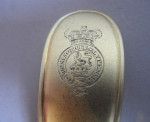ROYAL - An extremely fine & rare George III 36 PIECE SILVER GILT DESSERT SERVICE, FROM THE COLLECTION OF H.R.H. Prince Adolphus, 1st Duke of Cambridge , 7th son of King George III & qUEEN cHARLOTTE.
ROYAL - An extremely fine & rare George III 36 PIECE SILVER GILT DESSERT SERVICE, FROM THE COLLECTION OF H.R.H. Prince Adolphus, 1st Duke of Cambridge , 7th son of King George III & qUEEN cHARLOTTE.
375506
The Dessert Service is silver gilt and modelled in the smaller Old English Thread pattern which is double struck, the pattern being on the front and reverse. The Spoons were made in London in 1801 by William Eley and William Fearn and the Knives were also made in London in 1801 by Moses Brent, the specialist knife maker. Most knives in fine Dessert Services of the period will be by him. The Forks are unusually modelled in a variation of the Three prong design and were made in Vienna in 1799. This is most interesting, as the Forks were almost certainly purchased while Prince Adolphus was involved in military service on the Continent. They are engraved with his Crest as H.R.H. Prince Adolphus Frederick, a Prince of the Blood Royal. He was created the 1st Duke of Cambridge in 1801, when the spoons and knives were made, and they are all engraved with his Crest as H.R.H The 1st Duke of Cambridge, as a Duke of the Blood Royal. The set is of the finest quality, well marked and in outstanding condition. It is most interesting to see the two Crests of the Prince, as his titles changed.
The 1st Duke of Cambridge died at Cambridge House on Piccadilly in 1850 and his silver passed to his son, Prince George, 2nd Duke of Cambridge, 1st cousin of Queen Victoria. The second Duke died in 1904, having served as Commander of the British Army from 1856-1895. After his death there were several auctions of his property at Christie's including on the 6th and 7th June, 1904, "Valuable Collection of Old English and Foreign Silver and Silver-Gilt Plate of his Royal Highness The Duke of Cambridge. This service formed part of Lot 118 in the sale. Like his brothers, King George IV and HRH, The Duke of York, The 1st Duke of Cambridge was a prolific collector of Silver.
Length of the Spoons: 7.45 inches, 18.63 cm.
Length of the Forks: 7.2 inches, 18 cm.
Length of the Knives: 8.25 inches, 20.63 cm.
Total Weight: 80 oz, the set.
H.R.H. PRINCE ADOLPHUS, DUKE OF CAMBRIDGE.
Prince Adolphus (24 February 1774 - 8 July 1850) was the seventh son of George III and Queen Charlotte. He was more economical than his brothers and was popular at Court. was born at Buckingham House on 24 February 1774 and spent his early years at Kew, sharing a house with his older brothers, Ernest and Augustus. On 2 June 1786, he was made a Knight of the Garter and, shortly after, went with Ernest and Augustus to the University of Göttingen. Here his studies included the classics and theology, and he learned to fence.
In 1790, Adolphus travelled to Berlin to study military tactics before becoming a Colonel in the Hanoverian army. He fought in Flanders in 1793, where he was wounded and captured temporarily by the French. After recuperating in England, he returned to the Hanoverian army where he served again in Flanders. He retreated back to Hanover with the Hanoverians, but when they refused to stand up to Napoleon in 1803, Adolphus was forced to return to England. Back in England, Adolphus was made Military Commander of the Home District and Colonel in Chief of the Coldstream Guards, but these were empty titles and he saw no active service. On 26 November 1813, he was promoted to Field Marshal in the British army.
In 1813, Adolphus returned to Hanover where he served as Governor General. He was made Viceroy in 1831 which gave him the power to introduce a more liberal constitution in Hanover. On the death of William IV in 1837, his brother, the Duke of Cumberland, acceded to the Hanoverian crown and, once more, Adolphus was forced to return to England.
On 27 November 1801, Adolphus was made Duke of Cambridge, Earl of Tipperary and Baron of Culloden.
Adolphus was described by a lady visiting Hanover in 1799 as being
...extremely handsome, tall and finely formed with fair complexion and regular features, charming manners and a flow of amusing conversation.
Adolphus was popular at court and with the public.
RELATED ITEMS

